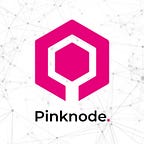“Pinknode: Polkadot’s Superhighway Network”
Infrastructure as we know it
Roads are an integral part of every civilization’s backbone. From all the roads that led to Rome to the roads that connected the Khmer Empire through the lush jungles of present-day Cambodia, roads are the most fundamental part of every civilization’s infrastructure.
In the last 10,000 years of human civilization, we have gone from the dirt roads of Carthage and Sumeria to the superhighways that criss-cross over the cityscape of Kuala Lumpur to the Chongqing overpass in China. And now, the digital world is taking the evolution of humanity’s connective infrastructure to its next step; digital highways. Nowhere does the development of virtual highways bring more promise than in the form of blockchain infrastructure.
This is where Pinknode comes in with a clear mission; to build an infrastructure layer with the most comprehensive coverage across all Polkadot chains, enabling the Web 3.0 revolution.
Web 2.0 to Web 3.0
While Web 2.0 has expedited the democratization of knowledge and launched the e-commerce & e-services revolution, Web 3.0 aims to make the decentralization revolution a reality. In addition, Web 3.0 will restore to current Web 2.0 users greater sovereignty over their own data and personal privacy which legal advocates have been pushing for over the last two decades. As the blockchain space gets ready for the transition to Web 3.0, should developers be bogged down building the bridge between them?
The Missing Link
The sprint from Web 2.0 to Web 3.0 is really more like a marathon. While progress is steadily chugging ahead, there are still key efficiency gaps in the infrastructure of blockchain. This infrastructural gap leading up to Web 3.0 remains on the Polkadot blockchain. As the fastest growing blockchain, Polkadot has received a mass migration of eager stakers and dApp developers and its lack of third-party middleware service providers presents a major barrier to entry.
How does this requirement present a hurdle to Polkadot developers? For the purpose of illustration, please ponder on the following:
Analogy on Polkadot’s Unique Architecture
Imagine a nation that is completely circular in shape, with its capital city right at its center. From the capital city emerges 100 perfectly straight roads, each ending in a smaller city on the nation’s periphery. All 100 cities are lined up near the country’s borders like the ends of a wheel’s spokes. Each of these 100 smaller cities is surrounded by even smaller towns.
Every month, the mayors of each city would compile all the policy-related requests and cross-city commerce requests after consulting every town in their jurisdiction. They would then drive up to the capital city and the nation’s center to exchange messages. The most these cities can achieve is bi-directional communications and cities only trade and engage in policy-making dialogue with other cities. The government at the capital city monitored all inter-city trade agreements to prevent unscrupulous mayors from economically exploiting other cities.
Predictably, this impeded trade and retarded the speed of political discussion and policy implementation. However, this changed when the nation’s president declared that an extraordinarily interconnected superhighway would be built, connecting every one of the 100 cities to each other. The dramatic efficiency brought about by this revolutionary infrastructure would allow the circular nation to achieve its true potential in terms of governance and economic expansion.
For those familiar with the Polkadot Protocol, the capital city at the nation’s center is an obvious analogy to Polkadot’s relay chain. Likewise, the 100 separated cities are analogous to Polkadot’s parachains and towns are the dApps.
Leading Infrastructure on Polkadot — “The Digital Superhighway”
Pinknode will be to Polkadot what the superhighway is to the circular nation. By dramatically improving the transmission of information for projects on Polkadot’s relay chain and parachains, Pinknode will serve as the highway they need on their journey to bringing Web 3.0 to life.
Like our incredible 100-road superhighway, Pinknode’s ultimate goal is to provide the most secure, reliable and scalable infrastructure services on Polkadot.
About Pinknode
Pinknode is a Polkadot-only Infrastructure-as-a-Service project with the goal of accelerating adoption and empowering innovators to create on the most promising Web 3.0 meta protocol. By providing API endpoints through a streamlined onboarding process and maintaining secure, reliable and scalable node infrastructure, Pinknode helps innovators jumpstart development quickly and accelerates product life cycles.
If you want to know more about Pinknode, check out our website, follow us on Twitter, and join our Telegram to get in on the conversation.
